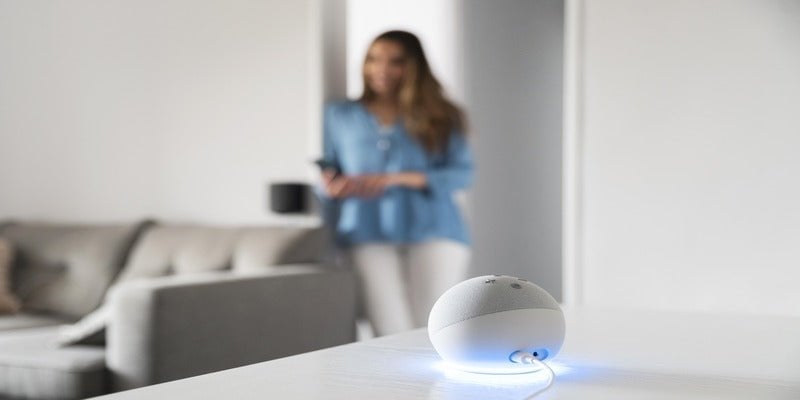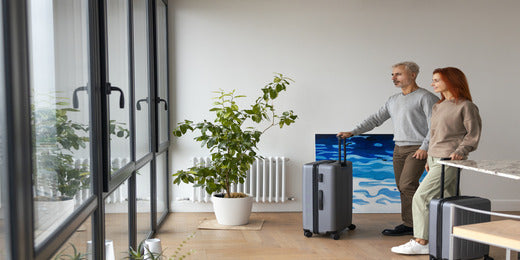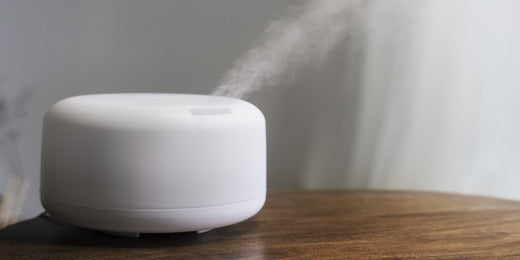A Comprehensive Guide on How to Clean Your Air Purifier Filter

In the quest for a healthier and more comfortable living environment, air purifiers have emerged as indispensable tools. These ingenious devices work tirelessly to rid our indoor spaces of harmful pollutants, allergens, and contaminants, ultimately ensuring that the air we breathe is of the highest quality. Yet, for an air purifier to function optimally, one crucial aspect cannot be overlooked: the cleanliness of its filters. In this comprehensive guide, we will delve into the intricacies of maintaining your air purifier's performance by exploring the art of cleaning its filters. As we navigate the process step by step, you will gain a profound understanding of why filter maintenance is vital to clean air purifier filters and how it contributes to a healthier, safer indoor atmosphere.
Understanding Air Purifier Filters:
Before we plunge into the depths of cleaning techniques, it's essential to acquaint ourselves with the heart of every air purifier: the filters. These filters are the unsung heroes responsible for capturing particles that degrade indoor air quality. Depending on the type of air purifier, various filter technologies are employed, each with its distinct mechanisms and capabilities.

- HEPA Filters (High-Efficiency Particulate Air Filters):
HEPA filters are renowned for their ability to trap microscopic particles with remarkable efficiency. These filters work by forcing air through a fine mesh that captures particles such as dust particles, mites, pollen, pet dander, and even bacteria. Because of their exceptional performance, HEPA filters are a common feature in many air purifiers.
- Activated Carbon Filters:
Activated carbon filters specialize in absorbing odors, gasses, and chemicals from the air. These filters consist of porous carbon material with a vast surface area, enabling them to trap and neutralize a wide range of volatile organic compounds (VOCs) and odorous substances.
- Pre-Filters:
Pre-filters act as the first line of defense by capturing larger particles like dust and pet hair. By preventing these particles from reaching the primary filters, pre-filters extend the lifespan of the more delicate components and contribute to the overall efficiency of the air purifier.
- UV Filters (Ultraviolet Filters):
UV filters use ultraviolet light to target and neutralize viruses, bacteria, and other microorganisms. While not as common as other filter types, they add an extra layer of protection against biological contaminants.
- Electrostatic Filters:
Electrostatic filters utilize an electric charge to attract and capture particles as they pass through the filter. These filters can effectively trap smaller particles that may escape other types of filters.

Why Cleaning Your Air Purifier Filter Matters?
The air we breathe plays an instrumental role in our overall well-being. With indoor spaces becoming increasingly sealed off from the outside environment, the quality of indoor air becomes a critical concern. This is where air purifiers step in, providing a means to mitigate the presence of pollutants and allergens that can compromise the clean air that we inhale. However, an air purifier is only as effective as its filters, and this is precisely why keeping those filters clean is of paramount importance.
- Sustained Performance: Just like any machinery, air purifiers require regular maintenance to perform at their best. Filters, serving as the frontline defense against airborne contaminants, accumulate particles over time. As these particles accumulate, the filter's ability to capture new pollutants diminishes. By cleaning the filters, you essentially revitalize their performance, ensuring they can continue to operate efficiently and maintain optimal indoor air quality.
- Improved Indoor Air Quality: The primary goal of an air purifier is to enhance the quality of the air we breathe indoors. A clogged or dirty filter, however, can hamper this objective. When filters are saturated with particles, they become less effective in capturing new contaminants, allowing them to circulate freely in the air. This compromises the purifier's capacity to provide clean and healthy air. Regular filter cleaning ensures that the air purifier remains a potent ally in maintaining a pristine indoor environment.
- Health Benefits: The consequences of neglecting air purifier filter maintenance can extend beyond the device itself. Airborne allergens and irritants, when not effectively captured by the filter, can exacerbate allergies, asthma, and other respiratory issues. Additionally, particles like dust, mold spores, and pet dander that accumulate on filters can be released back into the air if the filter is not cleaned. This can potentially lead to health problems for individuals, particularly those with sensitivities to allergens.
- Energy Efficiency: A clogged filter places additional strain on the air purifier's fan and motor. As the device struggles to draw air through the filter, it consumes more energy to maintain the desired airflow. This not only leads to increased energy bills but also places unnecessary stress on the other smart air purifier's components, potentially shortening its overall lifespan. Regularly cleaning the filter reduces this strain, promoting both energy efficiency and the longevity of the device.
- Cost Savings: Air purifier filters, especially those equipped with advanced filtration technologies like the HEPA filter and activated carbon, can be quite expensive to replace. Regularly cleaning and maintaining the filters can significantly extend their lifespan, reducing the frequency of filter replacements and saving you money in the long run.

Step-by-Step Guide to Cleaning Your Air Purifier Filter:
Preparation: Before you embark on the journey to a cleaner and healthier indoor environment, gather the necessary tools to ensure a successful filter-cleaning process. Here's what you'll need for how to clean the air purifier filter:
- Clean Cloth: For wiping down the filter and removing surface dirt and debris.
- Mild Detergent: A gentle, non-abrasive detergent for tackling stubborn stains and buildup.
- Water: Lukewarm water to create a cleaning solution and rinse the filter.
- Vacuum Cleaner with Brush Attachment: Useful for gently removing loose dust and particles from the filter.
- Sink or Basin: A clean area where you can safely clean and rinse the filter.
- Soft Brush: A soft-bristled brush for more delicate filter materials.
- Gloves: Optional, but wearing gloves can help protect your hands from dirt and cleaning solutions.
- Owner's Manual: Refer to the manufacturer's instructions for any specific guidance on cleaning your particular air purifier model.
Safety Precautions: Before you dive into the cleaning process, it's essential to prioritize safety. Here's how:
Unplug the Air Purifier: Always start by disconnecting the air purifier from the power source to prevent any electrical accidents during the cleaning process.
Removing the Filter: With safety in mind, let's move on to removing the filter from the air purifier. The process might vary depending on the model and type of filter:
- Consult the Owner's Manual: Before attempting to remove the filter, consult the manufacturer's instructions for your specific air purifier model. This will ensure you follow the correct procedure and avoid damaging the unit.
- Open the Air Purifier: If applicable, open the cover or access panel of the air purifier to gain access to the filter compartment.
- Detach the Filter: Depending on the design, gently detach the filter from its designated housing. Be cautious not to use excessive force, as this could lead to breakage or damage.
- Note the Orientation: Pay attention to the orientation of the filter as you remove it. Some filters have specific airflow directions, and reinstalling them incorrectly can hinder performance.
- Handle with Care: Filters can accumulate various particles, some of which might be allergenic or harmful. Handle the filter carefully, avoiding direct contact with your skin when possible.
- Set Aside in a Safe Area: Once removed, place the filter on a clean surface or in a basin where you can work on cleaning it.
Cleaning Specifics for Different Filter Types: Different filter types require specific cleaning approaches. Here's how to clean common filter types:
- HEPA Filters: Gently tap the filter to dislodge loose particles. Use a vacuum cleaner with a brush attachment to remove surface dust. If the manufacturer's instructions permit, you can rinse the filter with lukewarm water or wipe it down with a damp cloth. Avoid submerging the filter in water.
- Activated Carbon Filters: Activated carbon filters cannot be cleaned like other filters. Instead, follow the manufacturer's recommendations for replacing them, usually every 6 to 12 months.
- Pre-Filters: Remove the pre-filter and tap or vacuum it to remove dust and larger particles. Depending on the material, you might be able to wash it with mild detergent and water. Make sure it's completely dry before reinstalling.

Initial Dusting: This helps to remove loose debris and surface dust that may have accumulated over time. Here's how to effectively perform this task:
- Gently Tap or Brush: Hold the filter over a trash bin or a sink and give it a few gentle taps with your fingers. This will dislodge larger particles that are clinging to the surface.
- Use a Soft Brush or Vacuum: If your filter's material allows, use a soft-bristled brush or a vacuum cleaner with a brush attachment to further remove loose debris. Work in a delicate and careful manner to avoid damaging the filter.
- Avoid Excessive Force: While it's natural to want to completely rid the filter of all debris, avoid using excessive force that could lead to tears or damage. The goal is to remove loose particles without compromising the filter's integrity.
Caution: The key here is to be gentle. Filters are designed to capture particles effectively, but using too much force during cleaning can diminish their effectiveness and reduce their lifespan.
Rinsing (if applicable): Depending on the type of filter and the manufacturer's instructions, rinsing your filter with water might be an option. If your filter can be rinsed, follow these steps:
- Check Manufacturer's Recommendations: Refer to your air purifier's user manual or the manufacturer's guidelines to confirm if rinsing is recommended for your specific filter type.
- Lukewarm Water: If rinsing is permitted, use lukewarm water. Avoid using hot water, as it could damage the filter material.
- Gentle Rinse: Hold the filter under the tap with water flowing lightly over the surface. Allow the water to dislodge and carry away accumulated dirt and particles.
- Air Drying: After rinsing, set the filter in a clean, dry area completely before moving on to the next step. Ensure it is fully dry before reinstalling it in the air purifier.

Cleaning with Mild Detergent: For filters that are not meant to be rinsed or when you're dealing with disposable filters, with stubborn dirt and particles, using a mild detergent solution can be effective. Here's how to proceed:
- Create the Cleaning Solution: Mix a small amount of mild detergent with lukewarm water. Make sure the detergent is non-abrasive and suitable for the filter material.
- Dampen a Clean Cloth: Dip a clean cloth into the detergent solution and wring it out so it's damp but not dripping.
- Gentle Wiping: Gently wipe down the surface of the filter with the damp cloth. Focus on areas with visible dirt or stains. Again, remember to be gentle to avoid damaging the filter.
- Rinse and Air Dry: If you used a damp cloth for cleaning, use another clean, damp cloth to wipe away any detergent residue. Then, allow the filter to air dry completely before reinstallation.
Caution: It's crucial to use a mild detergent and avoid harsh chemicals that could damage the filter material or leave harmful residues.
Thorough Drying: After cleaning your air purifier filter, one of the most critical steps is ensuring thorough drying before putting it back into the clean air purifier can. Proper drying prevents the growth of mold and mildew and maintains the filter's efficiency. Here's why thorough drying is essential:
- Prevent Mold Growth: Moisture trapped in a filter can create a breeding ground for mold and mildew. These contaminants can compromise indoor air quality and pose health risks.
- Maintain Efficiency: A damp filter can restrict airflow and decrease the air purifier's effectiveness in capturing particles. Drying the filter thoroughly restores its ability to make air flow filter the air efficiently.
- Prolong Filter Life: Preventing excess moisture can extend the lifespan of the filter, reducing the frequency of replacements and saving you money in the long run.
To ensure your filter is completely dry before reinstallation:
- Allow Ample Time: Find a clean, dry area with good airflow, and place the filter there. Allow it to air dry naturally for several hours, or even overnight, if possible.
- Check for Dryness: Before reinstalling, make sure the filter feels completely dry to the touch. Avoid any dampness or moisture that might still be present.
Reinstalling the Filter: With your freshly cleaned and thoroughly dried filter ready, it's time to reinstall it in your air purifier. Follow these steps for a seamless reinstallation process:
- Orientation Check: Ensure you're reinstalling the filter in the correct orientation. Some filters have specific airflow directions or labeled sides. Refer to the manufacturer's instructions for guidance.
- Open the Air Purifier: If the cover or access panel was removed earlier, open it again to access the filter compartment.
- Place the Filter: Gently insert the clean and dry filter into its designated slot or housing. Be careful not to force it, as it should fit snugly without bending or damage.
- Secure the Filter: If there are any clips, latches, or locking mechanisms to hold the filter in place, engage them according to the manufacturer's instructions.
- Close the Cover or Panel: Once the filter is securely in place, close the cover or access panel of the air purifier.
- Power On: Plug in your air purifier and power it on. Observe for any unusual noises or vibrations that might indicate the filter wasn't reinstalled correctly.
Note: If your air purifier has multiple filters (e.g., a combination of two clean HEPA filters, and activated carbon filter), repeat the cleaning and reinstallation process for each filter type following the specific guidelines for each.

Conclusion:
In the pursuit of clean and breathable indoor air, an air purifier can be a powerful ally. However, the efficiency of this essential appliance hinges on the maintenance of its filters. We've embarked on a comprehensive journey through the ins and outs of cleaning your air purifier filter, understanding its various types, and appreciating the profound impact it has on your living environment.
Regular filter cleaning is not merely a chore; it's an investment in the well-being of yourself and your loved ones.





































.jpg?height=200&name=photo_2024-03-28_19-57-48%20(1).jpg)
.jpg?height=200&name=photo_2023-12-08_19-34-41%20(1).jpg)
